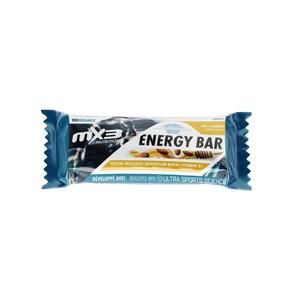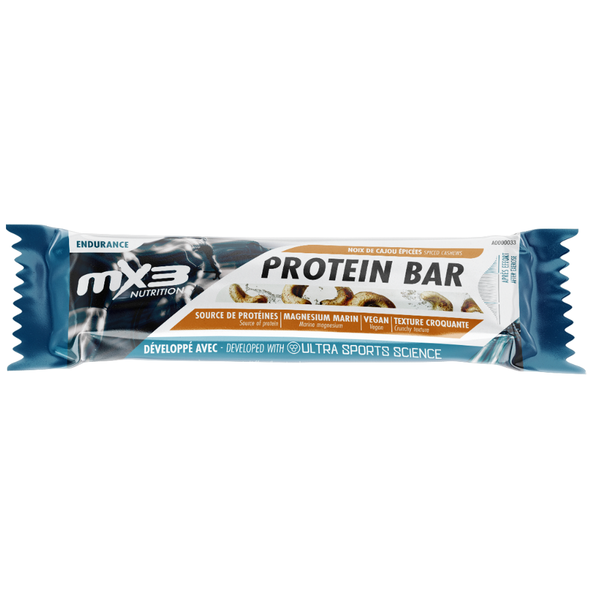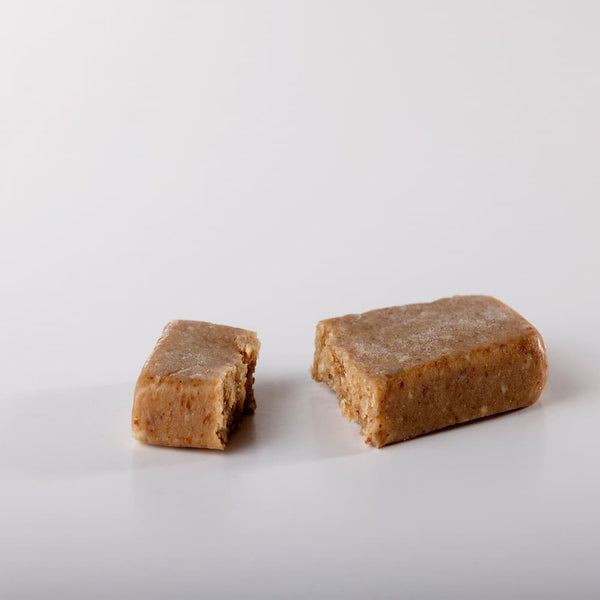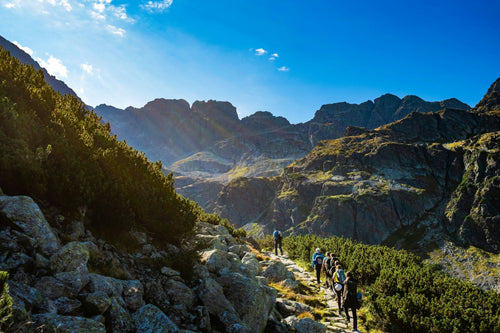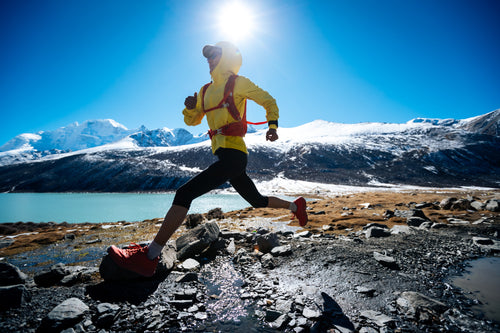During your expedition, what place did food occupy in your days?
Food played a crucial role during these 30 days of walking in a polar environment. It was even this parameter that set the pace for our days. Imagine ten hours of walking per day, carrying 90kg, at -30°C in a landscape of white infinity without any external stimulation. Meal or snack breaks then represent not only an interruption in the monotony of the progression, but also one of the rare pleasures of the day.
We had two meals a day, one in the morning and one in the evening, and we stopped about every hour for a snack. It was therefore essential for us that our rations were not just fuel but that they provided us with a real taste pleasure. Everyone had their favorite recipe, Thomas fell for the chicken colombo, Lucas for the pasta bolognese and for me, my guilty pleasure was fondue with its little croutons.
The meals were all the more appreciated because they were the price of much effort. Because unlike the ease we know in our daily lives, in a polar environment, eating has a price. Before we could enjoy our meals, we had to melt ice by handling the frozen stove, feed it with gasoline and watch the fire on our knees or lying down, facing the cold pit.
For our two meals, quickly devoured, we spent 4 hours a day cooking. And during breaks, to enjoy our snacks, we had to take out the groceries, take off one or two pairs of gloves, take handfuls, chew them, drink from the stove, then put everything away in the pulka at the end. All these gestures are repeated a thousand times and take considerable energy.
Still on the subject of your food, during your organisation phase, how did you manage the possibility of unforeseen events that could extend the duration of your expedition? Then, how did you control it in a real situation when you learned that the helicopter that was supposed to extract you would not be able to land within the planned time?
We thought we could complete the expedition in 30 days at the most, counting on 3 days of immobilization due to storms. We had taken 31 rations. That was without counting on the unpredictability of Greenland. We endured 5 days of storms and faced hundreds of kilometers of soft snow, headwinds, often in whiteout. We were unable to make up for this delay. On the thirtieth day, we arrived, exhausted, at the extraction point and learned that the helicopter refused to land due to the weather conditions.
The thick layer of clouds prevents him from seeing the ground, he risks crashing. The only window of good weather determined at that time being only 4 days later, we then organize ourselves so that the 31st ration lasts 4 days. Each tent distributes the food in its own way, in uncertainty. But finally, luck smiles on us and we wake up 24 hours later under a beautiful clear blue sky. After the first rotation of the helicopter, in the euphoria of the moment, we could not resist the temptation to treat ourselves to a small feast with the remaining food, we had to celebrate that!
How did you experience the aftermath? What assessment do you make of your food organization (quantity, general fitness, weight loss, etc.) and how did the transition from rationing to resuming a "normal" diet go upon your return?
Returning to a normal diet is tricky. At the end of the expedition, the possibility of having access to a varied and large quantity of food is a difficult challenge for the digestive system to grasp. For example, when we arrived in Tasilak, we feasted on the hotel's all-you-can-eat buffet. Several of us suffered from uncontrolled vomiting. This phenomenon continued for several days for one of us. You have to imagine that the body has become accustomed to a diet regulated to the nearest gram and with imperturbable regularity. It feels mistreated. Well, that didn't stop me from enjoying a tartare on my return to France!
Weight loss is one of the highlights of the expedition. I lost about 8kg, meaning I went from a weight of 80kg to 72kg. I wasn't heavy though. That's when you realize that the caloric intake of our rations was insufficient. I was in a caloric deficit throughout the expedition. That is to say, my body was spending more calories in heat loss and effort than it was receiving in compensation through food. To compensate, it burned fat and especially muscle. I came back very thin and very weak even though I had built up good physical condition after months of training.
When we returned, we were not sure what a good rehabilitation nutrition program would be.
We all came back from Greenland with a psychosis about butter. Butter is the most caloric element with olive oil, a real sesame. Plus, a life insurance. The fact of having rationed it strictly, slice by slice, of having run out at the end of the expedition following an unfair sharing has truly transformed our relationship with butter. We still abuse it today at breakfast and we accuse each other of having stolen the last block of butter from the expedition, although one of us admitted his fault half-heartedly, months after returning from the expedition.
During this first polar expedition, you acquired a whole new expertise and understanding of this environment. What will you do differently for your next polar expedition?
We have already started thinking about the next expedition ration which will have to evolve. The Engaged ration will have to meet the following qualities.
- An ultra-efficient organization of the elements in the bag to save time: the Engaged ration must be a protocol to follow with your eyes closed. No questions to ask, everything happens in a precise order, the right order.
- Maximum elimination of packaging: do not burden ourselves with unnecessary weight for shipping, in the form of trash cans that weigh up to 5 kg per person! So favor bulk for certain items.
- Preparation of food in advance: Chinese noodles already crushed, for example.
- Improved calorie/weight ratio: more butter and olive oil – the latter needs to be better compartmentalized, we had it in ice cubes which is not practical, ½ packet of Chinese noodles per person more, fruit/almond pastes, etc.
- Progressive increase in the nutritional value of rations over time, particularly for oil and butter, so as to accustom the body to digesting these fats and to increase the calories over the course of the expedition, when needs are greater and the body begins to draw on its reserves.
- "Surprise" rations to occasionally introduce a delightful new feature for the palate. But before putting all this into practice during our next polar expedition, we will also discover the challenges of high mountain nutrition for our first attempt to climb Aconcagua, a 6962 m physical challenge. Stay connected to discover our feedback on the MX3 blog!



